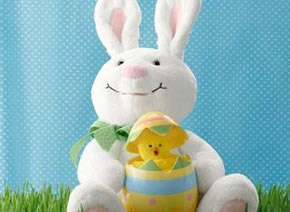Easter will be celebrated Sunday, April 16. Many traditions
of this religious holiday have their origins in pagan rituals
and beliefs.
Hallmark historian Sharman Robertson explains centuries
before Christ, the pagan tribes of Europe worshipped a
beautiful goddess of spring named Eostre (EE-ah-tra). Festivals
celebrating the end of winter and the birth of spring were held
in her honour at the end of March, the time of the vernal
equinox. Some historians believe the word Easter is a variation
of her name.
In all cultures, the egg symbolizes the beginning of life or
the universe. Eggs were dyed and eaten during spring festivals
in ancient Egypt, Persia, Greece and Rome. These cultures
regarded the egg as an emblem of the universe, the work of the
supreme divinity, the germination of life. Christians of the
Near East adopted this tradition and the egg became a religious
symbol. It represents the tomb from which Jesus broke forth.
Chocolate or candy eggs emerged in the late 1800s. Plastic
eggs made their debut in the early 1960s. More than 100 million
plastic eggs are purchased annually for Easter.
The bunny has its origins in pre-Christian fertility lore. It really is a hare - not a rabbit - that symbolizes Easter. According to one legend, the bunny was originally a large, handsome bird belonging to the goddess Eostre. One day she magically changed her pet bird into a hare.
Because the Easter bunny is still a bird at heart, he
continues to build a straw nest and fill it with eggs.
Easter Weather Superstitions: If it rains on Easter
Sunday, it will rain the following seven Sundays. A white
Christmas will bring a green Easter, and a green Christmas will
bring a white Easter.
Source: Hallmark Archives
